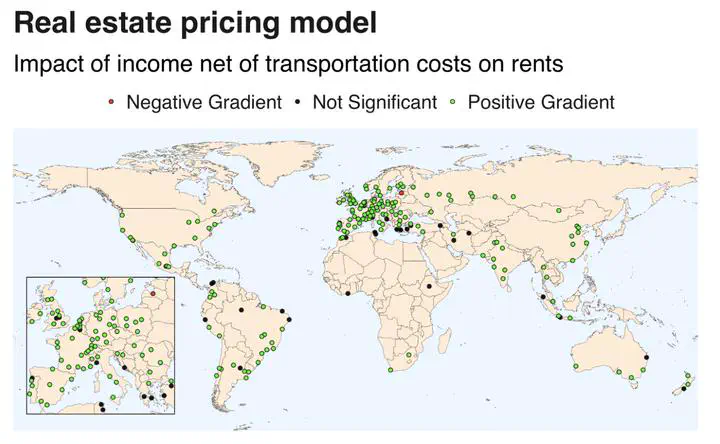Testing the Monocentric Standard Urban Model in a Global Sample of Cities

Abstract
Using a unique dataset containing gridded data on population densities, rents, housing sizes, and transportation in 192 cities worldwide, we investigate the empirical relevance of the monocentric standard urban model (SUM). Overall, the SUM seems surprisingly capable of capturing the inner structure of cities, both in developed and developing countries. As expected, cities spread out when they are richer, more populated, and when transportation or farmland is cheaper. Respectively 100% and 87% of the cities exhibit the expected negative density and rent gradients: on average, a 1% decrease in income net of transportation costs leads to a 21% decrease in densities and a 3% decrease in rents per m2. We also investigate the heterogeneity between cities of different characteristics in terms of monocentricity, informality, and amenities.